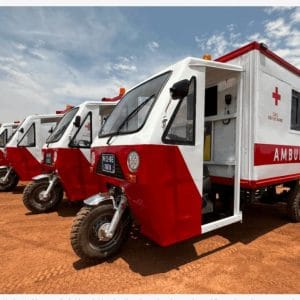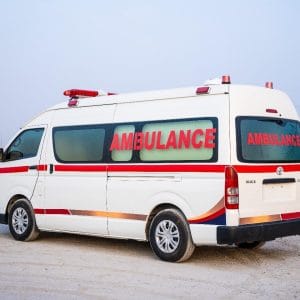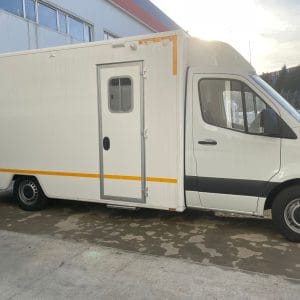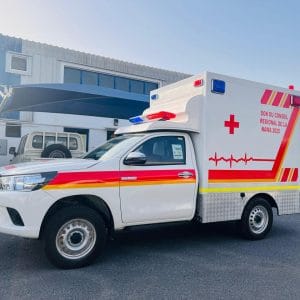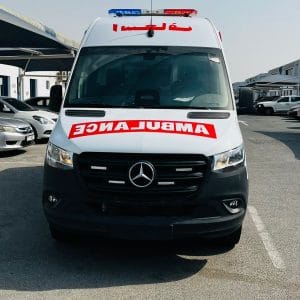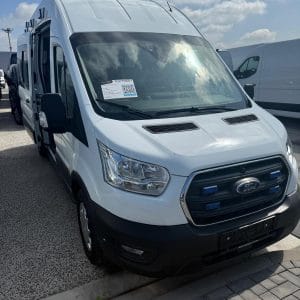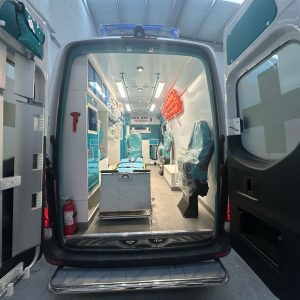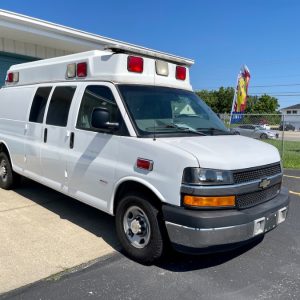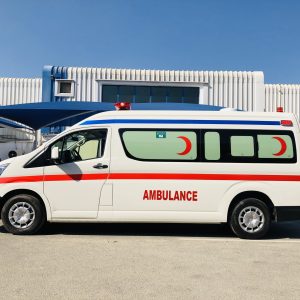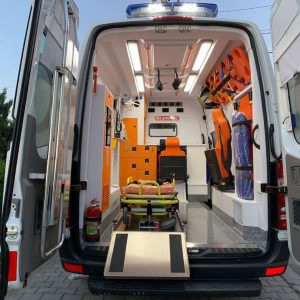Patient transfer ambulances are designed for non-emergency medical transport, requiring a safe, comfortable, and reliable vehicle for patients who do not need immediate intervention. The Mercedes Sprinter is the global chassis of choice in this category. This guide explains why and details everything you need to know.
Features of Hospital Transfer Ambulances
A Mercedes Sprinter-based transfer ambulance is far more than a standard van. Its key features include:
- Reliable Chassis: The Mercedes Sprinter is renowned for its durability, fuel efficiency, and extensive service network, ensuring low operational costs and long-term reliability.
- Modular Design: The ambulance box is highly customizable to meet the specific needs of both patients and medical personnel.
- Essential Medical Equipment: Includes an oxygen cylinder & mask, first aid kit, suction unit (aspirator), a vacuum stretcher fastening system, and a basic medical cabinet.
- Advanced Hygiene: The cabin is lined with easy-to-clean, antiseptic materials (e.g., laminate flooring, PVC-coated walls).
- Independent Power Supply: An auxiliary battery system with an inverter allows medical equipment to be charged and used while the vehicle is in motion, independent of the main engine.
Automatic vs. Manual Transmission Advantages
| Feature | Automatic Transmission | Manual Transmission |
|---|---|---|
| Advantages | – Reduces driver fatigue. – Provides a significantly smoother ride, especially in city traffic. – Offers a more comfortable experience for the patient. – Allows the driver to keep both hands on the wheel, increasing safety. | – Lower initial purchase cost. – Some operators prefer the traditional feel and perceived mechanical simplicity. |
| Disadvantages | – Higher initial purchase cost. – Maintenance and repair costs can be relatively higher. | – Can contribute to driver fatigue. – Gear changes can cause jolts, negatively impacting patient comfort. – A more stressful driving experience in heavy traffic. |
| Recommendation | An automatic transmission is highly recommended for patient transfer ambulances. The advantages in patient comfort and driving safety overwhelmingly justify the additional cost. |
Patient Cabin Layout and Comfort
The patient cabin is the core of the ambulance. The equipment listed in your attached material list is positioned here.
- Stretcher: A hydraulic or electric-powered trolley cot with a locking system (straps), wheels, and shock-absorbing properties.
- Attendant Seat: A rear-facing “captain’s chair” for medical personnel to observe and attend to the patient. It is securely mounted to EMS (Emergency Medical System) cabinets or rails.
- Equipment Cabinets and Shelving: Lockable cabinets and shelves for the secure storage of medicines, medical supplies, and equipment during transport.
- Lighting: Besides main cabin lights, features include a focused reading light for the patient and emergency lighting.
- Ventilation: An independent AC/heating system maintains a comfortable temperature in the cabin regardless of the weather outside.
- Safety: Features include stretcher anchor points, safety belts for staff, and locking systems to prevent equipment from moving during transit.
Price and Purchasing Guide
Price: The stated price of $90,000 USD is a reasonable and realistic market price for a new Mercedes Sprinter patient transfer ambulance with a mid-to-high level of medical equipment. This price should comprehensively cover the base vehicle cost, the ambulance conversion, labor, and all equipment listed in the attached material list.
Purchasing Guide:
- Needs Analysis: Determine usage frequency, typical patient profile (elderly, disabled, bariatric), and whether transfers will be urban or inter-city.
- Chassis Selection: Choose a Long Wheelbase (LWB) or Extra-Long Wheelbase (XLB) model for crucial interior space. Decide on engine power and transmission type (automatic is strongly advised).
- Converter Selection: Carefully select the ambulance conversion company. Check their references, certifications (e.g., compliance with the EN 1789 European standard for ambulances), and warranty conditions.
- Material List and Technical Specs: The attached material list you provided is the most critical document. The purchase agreement must include this list, specifying the brand and model for each item (e.g., “Suction Unit – [Brand X] Model Y”).
- Quotation and Contract: Obtain quotes from at least two reputable converters. Ensure the final contract includes the total price, a detailed equipment list, payment schedule, production/delivery timeline, and warranty details.
- Inspection and Delivery: Upon completion, conduct a thorough inspection to ensure the vehicle meets all specifications and standards before accepting delivery.



